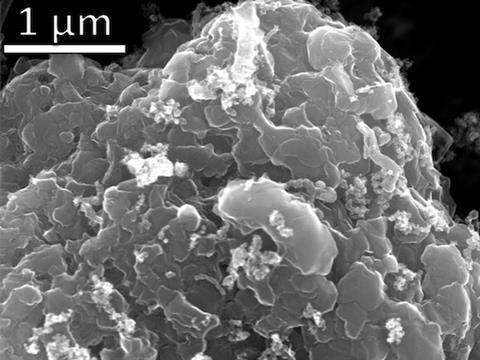
Researchers at Rice University have apparently harvested hydrogen and created a graphene by-product by flash heating plastic waste – a process that apparently offsets production costs and could ‘more than pay for itself’.
Although hydrogen is hoped to become a replacement for fossil fuels, it is expensive and/or carbon-intensive to generate.
“The main form of hydrogen used today is ‘grey’ hydrogen, which is produced through steam-methane reforming, a method that generates a lot of carbon dioxide,” explained James Tour, T. T. and W. F. Chao Professor of Chemistry and a professor of materials science and nanoengineering. “Demand for hydrogen will likely skyrocket over the next few decades, so we can’t keep making it the same way we have up until now if we’re serious about reaching net zero emissions by 2050.”
‘Green’ hydrogen uses renewable energy sources to separate water into hydrogen and oxygen, with just over two pounds said to cost around $5. However, most of the hydrogen used around the world in 2022 – reportedly totalling just under 100 million tons – is thought to have been derived from fossil fuels, with around 12 tons of carbon dioxide being emitted per ton of hydrogen.
Thought to be a low-emissions process, Rice University’s new method involves putting plastic waste samples through rapid flash Joule heating for around four seconds. This raises their temperature to around 3100 degrees Kelvin, or 2826.85°C, and vapourizes the hydrogen from the plastics to create graphene.
“In this work, we converted waste plastics ⎯ including mixed waste plastics that don’t have to be sorted by type or washed ⎯ into high-yield hydrogen gas and high-value graphene,” said Kevin Wyss, a Rice doctoral alumnus and lead author on a study published in Advanced Materials. “If the produced graphene is sold at only 5% of current market value ⎯ a 95% off sale! ⎯ clean hydrogen could be produced for free.
“When we first discovered flash Joule heating and applied it to upcycle waste plastic into graphene, we observed a lot of volatile gases being produced and shooting out of the reactor. We wondered what they were, suspecting a mix of small hydrocarbons and hydrogen, but lacked the instrumentation to study their exact composition.
“We know that polyethylene, for example, is made of 86% carbon and 14% hydrogen, and we demonstrated that we are able to recover up to 68% of that atomic hydrogen as gas with a 94% purity. Developing the methods and expertise to characterize and quantify all the gases, including hydrogen, produced by this method was a difficult but rewarding process for me.
“I am glad that techniques I learned and used in this work ⎯ specifically life-cycle assessment and gas chromatography ⎯ can be applied to other projects in our group. I hope that this work will allow for the production of clean hydrogen from waste plastics, possibly solving major environmental problems like plastic pollution and the greenhouse gas-intensive production of hydrogen by steam-methane reforming.”
Funding from the United States Army Corps of Engineers was used to access the necessary equipment, while the United States Army Engineer Research and Development Center (W912HZ-21-2-0050), the Air Force Office of Scientific Research (FA9550-22-1-0526), the National Science Foundation, and the Office of Naval Research (N00014-22-1-2788) supported the research.
Recently, Novelis was awarded a £4.6 million grant to trial the use of hydrogen as a power source for its recycling furnaces. It contributes to the company’s efforts to decarbonize its own aluminium production and industrial activities in the north-west region of the United Kingdom.
Meanwhile, the ‘world’s first’ successful batch of aluminium using carbon-free hydrogen as an energy source has apparently been produced by Hydro – a development hoped to help drive the use of green hydrogen in heavy industry aluminium production.
If you liked this article, you might also enjoy:
The L’Oréal approach to packaging sustainability
What steps is Apple taking to make its packaging more sustainable?
How did Brazil achieve its 100% aluminium can recycling rate – and can it be replicated in the EU?
Experts have their say on the EU’s Packaging and Packaging Waste Directive revisions











No comments yet